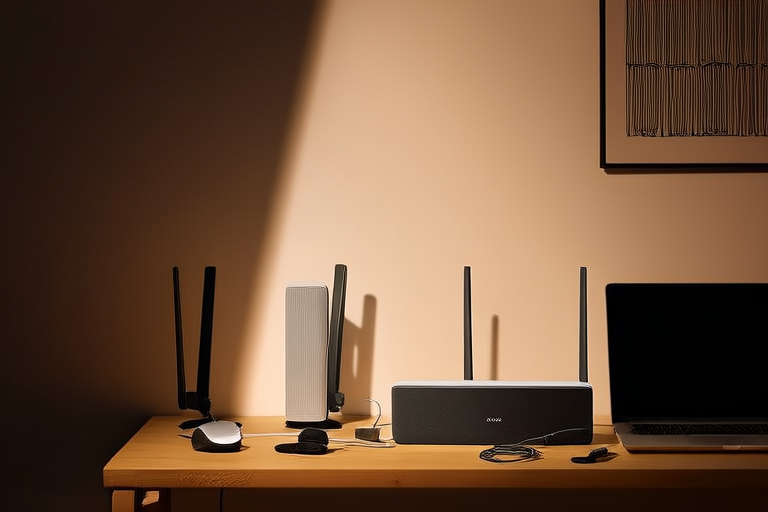“`html
5 Essential Tips for Safeguarding Your Network Privacy
Introduction
In today’s digital age, where nearly every aspect of our lives is interconnected through networks, ensuring network privacy has become more critical than ever. From personal data to financial information, everything is at risk of being compromised by malicious actors. Common threats such as hacking, phishing, and data breaches can lead to severe consequences, ranging from identity theft to financial loss.
This article aims to provide you with five essential tips to safeguard your network privacy. Whether you’re a tech-savvy individual or someone who is just beginning to explore the world of cybersecurity, these practical and easy-to-follow guidelines will help you protect your online presence.
Tip 1: Use Strong and Unique Passwords
One of the most basic yet effective ways to enhance your network privacy is by using strong and unique passwords. A weak password can easily be cracked by hackers, giving them access to your accounts and personal information. Therefore, it is crucial to create passwords that are both strong and unique for each account.
A strong password typically consists of a combination of uppercase and lowercase letters, numbers, and special characters. It should also be long enough, ideally 12 characters or more. Avoid using easily guessable information like your name, birthdate, or common words.
To manage multiple passwords securely, consider using a password manager. These tools store your passwords safely and allow you to generate strong, random passwords for each account. This way, you don’t have to remember complex passwords yourself, and you can ensure that each password is unique.
Tip 2: Enable Two-Factor Authentication (2FA)
Two-factor authentication (2FA) adds an extra layer of security to your accounts by requiring a second form of verification in addition to your password. This could be something you know (like a PIN), something you have (like a smartphone), or something you are (like biometric data).
The benefits of using 2FA are significant. Even if a hacker manages to obtain your password, they would still need access to your second factor to log into your account. This makes it much harder for unauthorized users to gain access to your information.
To set up 2FA, follow these steps:
- Go to the settings of the platform you want to secure (e.g., email, social media).
- Look for the security or login options.
- Enable 2FA and select your preferred method (SMS, authenticator app, hardware token).
- Follow the prompts to complete the setup process.
Remember to enable 2FA on all important accounts, including email, social media, banking, and cloud storage services.
Tip 3: Keep Software and Systems Updated
Keeping your operating systems, applications, and antivirus software up to date is vital for maintaining network privacy. Updates often include security patches that address known vulnerabilities, which can be exploited by hackers.
Outdated software can leave your system exposed to malware and other cyber threats. By regularly updating your software, you ensure that you have the latest protections against these risks.
To make sure your systems stay updated, consider enabling automatic updates. Most modern operating systems and applications offer this feature, which ensures that updates are installed without manual intervention. This not only saves time but also reduces the risk of forgetting to update your software.
Tip 4: Use a Reliable Firewall and Antivirus
A firewall acts as a barrier between your network and potential threats from the internet. It monitors incoming and outgoing traffic and blocks suspicious activity. An antivirus program, on the other hand, scans your system for malware and removes it.
There are two main types of firewalls: hardware and software. Hardware firewalls are physical devices that sit between your network and the internet, providing a robust layer of protection. Software firewalls, on the other hand, are installed on individual computers and can be customized to suit specific needs.
For antivirus solutions, there are many reliable options available. Some popular choices include Norton, McAfee, and Bitdefender. It’s important to choose a reputable antivirus provider and keep your antivirus software up to date. Regular scans should also be conducted to ensure that your system remains free from malware.
Tip 5: Be Cautious with Public Wi-Fi
Public Wi-Fi networks, while convenient, pose significant risks to your network privacy. Hackers can exploit these networks to perform man-in-the-middle attacks, where they intercept your data as it travels between your device and the internet. This can result in the theft of sensitive information such as passwords, credit card details, and personal data.
To stay safe when using public Wi-Fi, follow these guidelines:
- Avoid accessing sensitive information such as online banking or email accounts.
- Use a virtual private network (VPN) to encrypt your internet connection. A VPN creates a secure tunnel between your device and the internet, making it difficult for attackers to intercept your data.
- Choose a reputable and secure VPN service. Look for providers that offer strong encryption and do not keep logs of your activity.
By taking these precautions, you can significantly reduce the risk of exposing your personal information when using public Wi-Fi.
Conclusion
Network privacy is a critical concern in today’s digital landscape. By following these five essential tips—using strong and unique passwords, enabling two-factor authentication, keeping software and systems updated, using a reliable firewall and antivirus, and being cautious with public Wi-Fi—you can greatly enhance the security of your online activities.
Remember, staying vigilant and proactive is key to protecting your network privacy. Take the necessary steps today to safeguard your personal and financial information from potential threats. For those interested in learning more about network security, there are numerous resources available, including books, articles, and courses that can provide deeper insights into the topic.
“`




